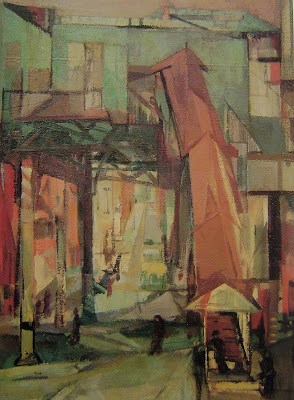
I love what Michael Kimmelman, art critic for the NY Times, has to say about Wayne Thiebaud's work. In his book on the consolations of art he talks about why they appeal to us, and I think he nails it. What do they possess that other deceptively simple works lack? Above is Pies, Pies, Pies from 1961.
Kimmelman says:
After a while Thiebaud's pictures prompt something more complicated than plain joy -- as with Chardin, closer to the nature of memory, which is always a tricky affair. This reaction slowly registers in our minds as the gap between what actually was -- between those cloying Boston cream pies that we really ate nad the gum-ball machines that ate our pennies - and the world as we wished it to be. Thiebaud gave us not real cheese but Platonic cheese, as the writer Adam Gopnik once put it. And this gap between reality and desire ushers in, in Thiebaud's art, even more than in Chardin's a sadness after the first leaping rush of pleasure. Thiebaud's art is not about the perfect world. It is about the fact that the world never was and still isn't perfect, except perhaps the little imaginary part of it to which we can briefly retreat in these paintings and thereby glimpse the way all things ought to be. (p. 222-3, The Accidental Masterpiece)
I think he may be right. He goes on to consider the artist's depictions of people and explains his view that Thiebaud's people are more like Vermeer's than Hopper's lonely figures. They may be minutely described, but we can read just about anything into those faces. We cannot ever really know more about them than we can about strangers we pass in the store or on the street. Here's Vermeer's Girl with a Pearl Earring along with Thiebaud's Two Kneeling Figures.
What do you think? Do you agree? Are they ciphers?




























